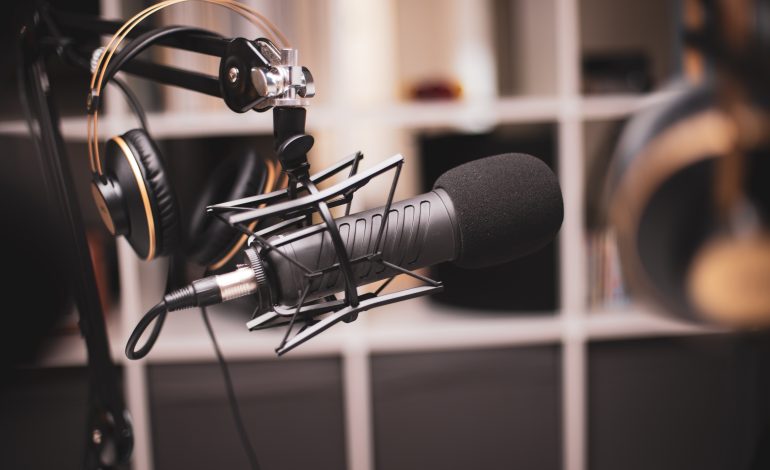A voice actor, regardless of medium, aids in drawing audiences into a production. There are more opportunities than ever before in the sector, with roles available in animated shows and movies, radio and web ads, video games, and narrative podcasts.
While there is no fixed list of formal prerequisites, there are some necessary skills and technical knowledge to get started, retain a strong voice, and create a demo reel that gets you recognized. Here are the essential instruments for voiceover work in any industry.
At its core, voice acting is acting. Voiceover work involves studying a script, crafting a character, and using different techniques to bring a project to life. The main difference, of course, is that you do so solely using your voice. A voice acting career doesn’t have to be limited to just film and television—the industry also involves radio, commercials, animation, video games, and podcasts. Whatever the case, the work involves delivering a performance into a microphone, often working alongside a director to capture the right tone for the role.
Voice work generally involves hours inside a recording studio or, in the age of the pandemic, recording via a home setup. In some cases, you record opposite other voice actors; but the majority of the time it’s just you and the studio staff—or solo, if you’re self-producing.
Degree?
No formal education is required to become a voice actor, but obtaining a degree from an acting college or university is one path to learning all of the skills you need in one place.
An undergraduate acting education costs an average of $33,351. Acting classes or workshops, on the other hand, are not only a more affordable option—these usually cost between $150 and $2,000—but will also allow you to specifically focus on voice acting. Organizations like the Voice Shop, Howard Fine Acting Studio, or Acting & Voice Studios offer classes you can complete online. Voice acting classes can be valuable tools for a newcomer who wants to learn to embody a character, master tone, and improve their enunciation.
The other benefit of taking classes or attending workshops is that they often offer the chance to produce samples for your voice acting demo reel. This is where you can showcase your talents and range, making it a vital tool for booking gigs and landing an agent. At the beginning of your career, however, demo reels can be hard to assemble without any professional experience to showcase. Classes are a legitimate way to not only learn the basics of voice acting, but also assemble clips with the guidance of a professional.
Read Also: How to Get Into The Voice Over Business
On your own time, study common voiceover industry terms so you can dive into professional work without hesitation. Here are some terms you may come across:
- Billboard: highlighting a specific word or phrase in a script the director would like you to emphasize
- Copy: the script you’ll be using for your voiceover performance
- Level: a read-through of the line or script at your regular volume that is used to calibrate sound levels before recording
- Popping: high-pitched sounds caused by sudden bursts of breath and hard consonants
- Punch: emphasizing a word or phrase with a stronger, sharper voice
- Pickup: rereading an earlier line, usually a single isolated sentence, in order to make up for a technical glitch or give the director more options
- Cold-reading: reading a script you haven’t had a chance to study prior to recording
Below are some of the most important requirements for a voice over actor.
A strong voice
A good microphone can pick up a lot, but it is still incumbent on the voice actor to be able to project clearly. Innate ability and genetics help, but a strong voice is something that can be trained. Exercises and warmups that can help fortify your voice include:
- Full-body stretches: Place your feet shoulder-width apart and slowly lean to each side, stretching your arms. Keeping your rib cage, torso, and diaphragm flexible is key to projecting.
- Diaphragm exercises: Your diaphragm—the muscle that helps you breathe in and out—is a central part of maintaining your airflow and strength during vocal performances. Lay flat on your back with a light weight on your stomach. Consciously breathe using your diaphragm, paying attention to the way you’re using the muscle to lift the weight.
- Yawning: Stretching the muscles in your face will allow for more natural voice performances. Yawn widely to stretch before a vocal performance.
- Humming: Hum for 10 seconds at your normal baseline frequency, then cycle through higher and lower pitches.
- Breathing exercises: The foundation of a strong voice is breath control. Take time out of your day for a simple airflow exercise. Inhale slowly for a count of 10; hold that breath for a 10 count; then slowly exhale for another 10 count, consciously feeling the air passing through your lips.
It’s also imperative to maintain the health of your voice—especially if you often do voiceover work that’s pitched lower than your normal register.
- Avoid smoking (or being close to smokers).
- Rest your voice between jobs.
- Keep yourself hydrated.
- Avoid whispering as much as possible.
Enunciation and articulation
The strongest voice in the world won’t matter if directors and producers cannot understand what you’re saying. As a voice actor, you’ll need to perfect your enunciation—which is the clarity of the way you deliver lines—and articulation, which is the act of enunciating clearly. Try these exercises:
- Reading out loud: Pick a book off the shelf and read through the text, taking note of anything that trips you up or causes you to stumble over your words. As an added exercise, come up with a distinct performance—accent, characterization, delivery, etc.—for each character’s dialogue.
- Tongue twisters: Repeat tongue twisters as fast as possible throughout the day. The classics, like “unique New York” or “Sally sells sea shells by the sea shore,” should do the trick.
- Vocal rises and falls: Pick a single word and repeat it out loud, gradually ascending in pitch. Once you’ve reached your highest pitch, cycle back down to your lowest.
The proper setup for recording and editing
Once you’ve learned how to hone and maintain your instrument, it’s important to master the technical skills. First, focus on your space. “As a voiceover artist, the room in which you record is the most important factor to consider,” says VO actor Jamie Muffett. A non-square room is ideal, and the smaller the better—consider a walk-in closet, if you have access to one. Ensure your recording space does not share a wall with any room that regularly has noises issuing from it, and turn off any loud appliances in the area.
There are a few basic pieces of equipment you’ll need to create a DIY home studio. Assembling the right tools of the trade should cost around $600 when you’re first getting started:
- Microphone
- Preamp
- USB computer interface
- Mic stand
- Pop screen
- Headphones
To edit together your recordings, you’ll need a digital audio workstation (DAW). Most beginners opt for a free, user-friendly interface like Audacity or GarageBand before graduating to more complex (and costly) options like Adobe Audition or Pro Tools.
An impressive voiceover demo reel
Your demo reel is your voice acting résumé—it shows casting directors, agents, and producers what you’re capable of. Ideally, your demo should run no longer than 60 seconds, leaving room for three to six clips. Make sure the material in your demo is relevant to the type of work you’re pursuing—a commercial demo reel, for example, should include your best work performing the commercial copy.
Attending workshops and classes can help you gather clips for your first demo reel—but there’s also the option of downloading sample scripts or creating your own. Either way, you’ll want to work with coaches and/or producers who know what they’re doing. VO coach and casting director Lau Lapides notes that working with a top-notch team helps “you avoid the typical pitfalls of producing a high-level demo,” such as editing out awkward pauses and trimming to the ideal length, as well as advising on any recent industry trends.


